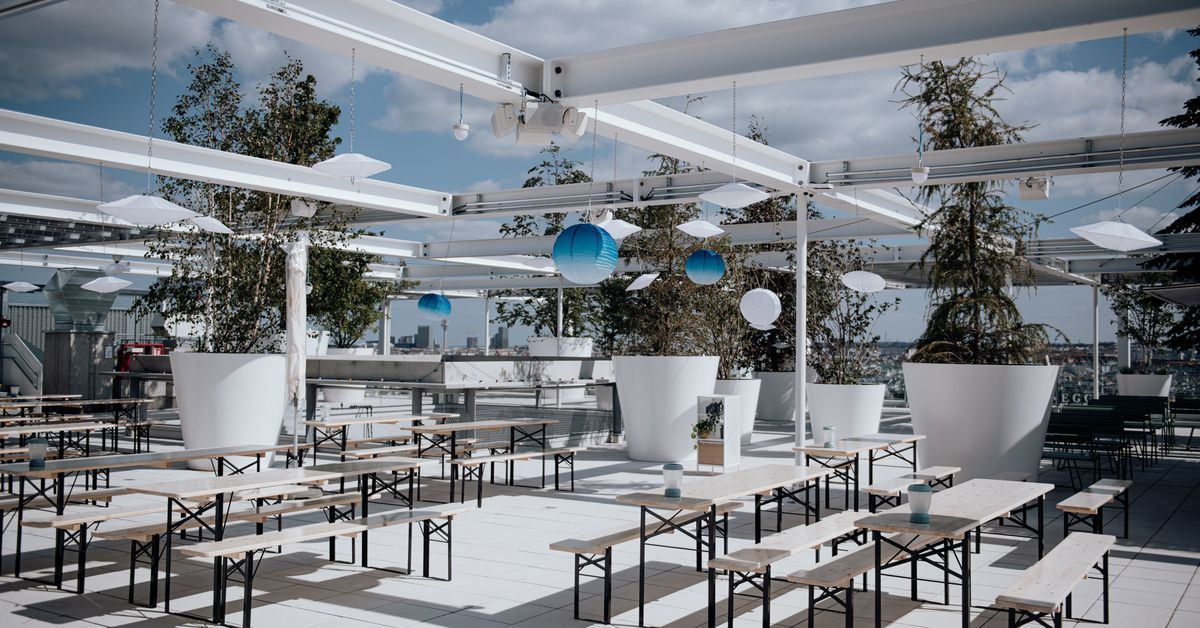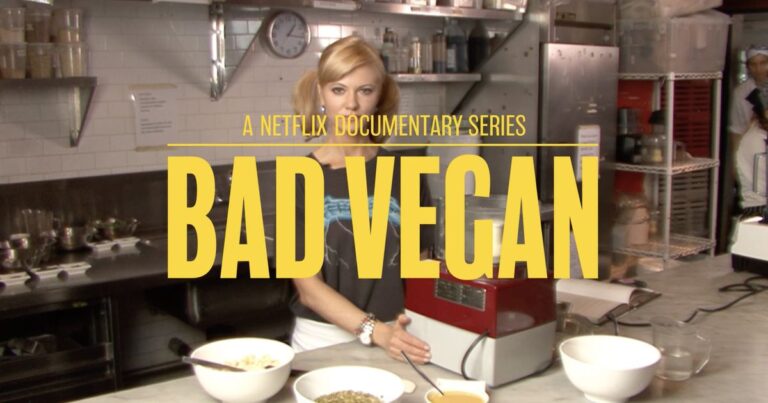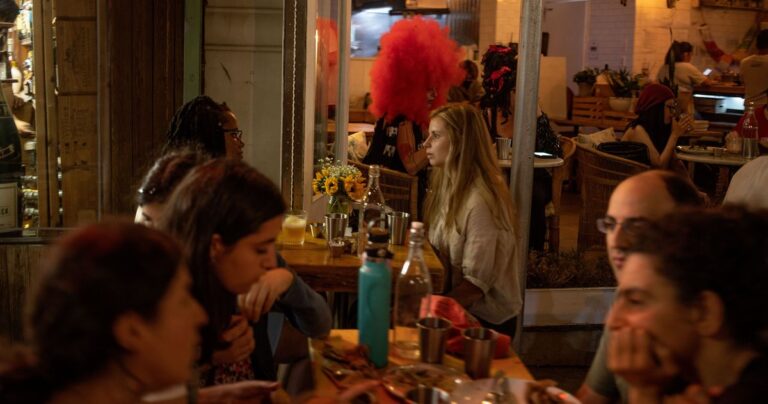Ikea Wants to Transition From Furniture Store to Lifestyle Brand
I couldn’t decide: Beet hummus with cilantro, or lentils and cream cheese with chives? The toppings couldn’t be more different, but which would pair better with stewed mushrooms and tomatoes? It was early fall around sunset, still warm enough to eat outside a little longer, but a sudden breeze forced me to make a decision for my handbröd, a palm-sized roll stuffed with cheese or vegetables and with my choice of toppings. I went with the lentils and cream cheese, paid — 3.50 euros ($4.06) with the optional topping — and ripped off a corner. The pastry was tender and buttery, the filling still warm, a nice counterpoint to the cool, creamy topping. The biggest surprise, however, were the chives; I didn’t expect to get fresh herbs in a dish from Ikea.
When Ikea opened its Vienna location in the fall, the handbröd was the featured dish of the company’s newest food concept, an entirely vegetarian snack bar called Toppen located on the building’s rooftop terrace. This location counts among the compact city stores Ikea has been testing out in recent years that, in contrast to its sprawling suburban stores, forgo the maze of a showroom and the warehouse in order to be located in urban centers — this one is on top of Westbahnhof, one of the busiest underground stations in the city — and thus have fewer products available in the store.
Even before a pandemic forced nearly all aspects of our lives online, many brick-and-mortar stores have been searching for ways to lure customers into their physical locations. More than any other existing Ikea city store, the Vienna location seems to be doing this with food, most of it vegetarian. In addition to the standard Swedish restaurant (think meatballs) and bistro (think hot dogs and cinnamon rolls) found in all Ikeas, as well as a cafe serving coffee and cake, Ikea Vienna Westbahnhof has Toppen sitting on the building’s rooftop terrace, a novelty in and of itself.
The restaurant is accessible even when the furniture isn’t, staying open on Sundays, which is otherwise respected across Austria as a day of rest for businesses. On the FAQ page for the new location, there’s a section dedicated to food-related questions, and one of them asks whether Ikea’s food is available for delivery. The answer: not yet, though maybe in the future.
Operating a restaurant is never a sure business move, especially since, as the past two years have shown, in-person dining is basically always another airborne pandemic away from closure. But with this new location, the world’s largest furniture retailer seems to be asking: Can Ikea survive by doing just that?
One does not necessarily go to eat at Ikea to be blown away by the freshest local specialties. In fact, one generally doesn’t eat at a chain restaurant if they want to be surprised at all. We eat at those places because they’re convenient and consistent and usually cheap, and for those reasons good. But at the new Vienna Westbahnhof Ikea, food is asking to be taken more seriously — and it’s taking up more space, in the physical store as well as in the marketing.
This new compact city store, which strongly emphasizes its accessibility and environmental consciousness — there is no parking lot, encouraging customers to travel by foot, bike, or public transportation and to order larger items to be delivered the next day — also offered an opportunity for Ikea to pilot a new menu focused on a few buzzwords: health, sustainability, and freshness. Ads and posters in subway stations across the city, near the store’s entrance, and in the store itself show a few artfully plated meatballs — or are they plant balls? — on a clean white plate, with colorful accoutrements of fresh vegetables and those herbs again, letting you know that the restaurant is, in fact, open on Sunday until 4 p.m.
:no_upscale()/cdn.vox-cdn.com/uploads/chorus_asset/file/23350549/handbrod_ikea.png)
What these buzzwords mean practically, among other things, is that there are no French fries on the menu — they’re usually ubiquitous at other Ikea restaurants, available on the side with most entrees — and that there’s more than just the classic beef meatballs. There are vegan replacement-meat “plant balls,” which debuted across Ikea locations last year, as well as veggie balls and chicken balls, both of which were introduced in 2015. You can get your choice of balls with the classic sides of mashed potatoes and lingonberries, or you can get your veggie balls in split pea soup, or your plant balls served on top of a quinoa salad with cauliflower and a yogurt-feta dip, or your chicken balls in a ginger-teriyaki sauce on a bed of noodles.
“We are slowly transforming our complete food business to meet the customer’s healthy demands [and] also to be a more responsible retailer,” said market manager Johanna Cederlöf. “We believe that changing our food range in the longer term is not [only] good for our customers but also good for us and good for the business as well.”
That’s the goal of all of this anyway, isn’t it: to get customers to linger in physical stores in hopes that they’ll spend more money there. It’s the reason why Barnes & Noble started selling $26 entrees in Barnes & Noble Kitchen in a handful of its stores in 2016, why Urban Outfitters started working with celebrity chefs to open restaurants in its locations a few years before that. “Experiential retail” was seen as the way to compete amid the online shopping boom, though it was not necessarily a successful one. B&N Kitchens only ever had a handful of outposts and since the pandemic, only four are left. The UO crossovers were short-lived, and corporate instead created a new branch of its business for the few restaurant brands that remain.
On the other hand, Ikea had already been offering experiential retail — or, as Ikea Vienna Westbahnhof food manager Kit Wai Kan called it, “a complete shopping experience” — for decades. Founder Ingvar Kamprad opened the first Ikea store in Älmhult, Sweden, in 1953; the first Ikea restaurant opened there in 1960. And the company is transparent about the reason on its website: “[Kamprad] realises that hungry customers buy less. Or as we often say, it’s tough to do business on an empty stomach.” Whatever Kamprad’s intention, Ikea is now practically synonymous with Swedish meatballs.
Over 60 years later, they’re extremely self-aware about the reputation of Ikea food, even while trying to shift customers’ expectations of what “Ikea food” can be. The handbröd, the small stuffed bread roll served at the Toppen snack bar, was discontinued this year after a disappointing performance and poor customer feedback, according to marketing leader Sandra Bamberger. Eaters at Ikea want something more familiar, said Bamberger, so they’re planning on replacing the handbröd with more recognizable paninis and a plant-based burger, which is still being developed.
With a few exceptions, Ikea has struck a winning balance between retail and dining, so now it’s looking for other in-store-only experiences to attract customers, from design help to rooftop terraces. The greater foot traffic Ikea’s city stores experience helps boost “the awareness and notoriety of [the] Ikea brand,” wrote Maria Bertoch, a food service industry analyst at market research firm NPD, in an email. (Ikea is one of NPD’s clients.)
That brand recognition hasn’t translated into a standalone restaurant yet, though it’s an idea the company has toyed with before. A few years ago, the company found about 30 percent of Ikea shoppers go to the store just for the food, though food sales only accounted for five percent of Ikea’s $39.34 billion revenue in 2019. But five percent of $39.34 billion is still nearly $2 billion, which would make Ikea’s restaurants a bigger food chain than Wendy’s.
One of the first things a friend told me after she visited the new Ikea was that the rooftop would make a pretty good location for a first date. There’s a nice view, plus a bar operated by the hostel that occupies the top two floors of the building. So I decided to go on a date to Ikea. You know, for journalistic purposes.
We took the elevator straight up from outside to the seventh floor, to the rooftop, passing the furniture entirely. Rows of picnic tables in the middle, near the bar and the Toppen snack bar, alternated with dozens of potted trees, softening an atmosphere that otherwise included lots of metallic and sharp edges, mechanical things that were probably important but not particularly hygge. But all that faded before the real reason to come: a pretty spectacular view of Vienna, rooftops sprawling to the east, south, and west, before it hit the mountains. Interestingly, with the exception of Schloss Schönbrunn, the parts of Vienna that are visible from the rooftop aren’t the touristy landmarks the city is known for. The store’s building feels integrated into the landscape, into the city. It feels like a place to which Viennese people would actually go and want to spend time.
I did see plenty of people spending time doing non-shopping things while I was there, especially on the rooftop terrace. A non-exhaustive list includes: studying and working on laptops using the store’s free WiFi, Instagram photoshoots, and even yoga. I also saw a group of people drinking beers they had bought elsewhere, a phenomenon that roaming security guards are supposedly meant to prevent (Ikea doesn’t get any revenue from the bar; Cederlöf said Ikea isn’t trying to get into the alcohol business). Up there, it’s easy to forget you’re on top of a furniture store.
:no_upscale()/cdn.vox-cdn.com/uploads/chorus_asset/file/23351392/ikea_hus_opening_day1_44.jpg)
Niklas Stadler / Ikea
The food itself, though, tasted like it came from Ikea. The teriyaki sauce on the chicken meatballs was watered-down and the handbröd with vegetables, chives aside, tasted almost exactly like a pizza Hot Pocket. The plant balls make a suitable alternative to beef, especially when covered in gravy, but they’re tougher, clearly lacking the fat that make the classics juicy even when they’ve been sitting in a serving tray for hours. For the price — 5 euros ($5.80) for eight meatballs, 6.50 euros ($7.54) for 12 — they were good. The real standout, however, was a bag of pickled mushroom-flavored potato chips (0.80 euros, or $0.93) I got on a whim while waiting for the handbröd. Their flavor was reminiscent of salt & vinegar chips, with an extra depth thanks to the addition of dried porcini powder.
The date went well, in part because being on a date at Ikea was an automatic icebreaker. After trying the handbröd on the roof, my date and I went back inside to the restaurant on the fourth floor, where we had to show proof of vaccination to enter, a rule across the country that is consistently enforced. During the day the restaurant is airy and bright due to all-white everything and floor-to-ceiling windows, offering a view that, though not as impressive as that from the roof, would still allow a real restaurant to charge twice as much for their dishes. When the sun goes down and the overhead lights come on, however, it’s easier to realize that the dining room with exclusively Ikea furniture is, indeed, inside of an Ikea. My date courteously shelled out the 5 euros for my order of plant balls, and I said I would pay next time.
I thought I was going to manage to visit the store without being tempted to buy anything. But as we went through the store to leave, right in front of the exit, I saw the one thing I kept forgetting I needed in my apartment: a microwave cover. I grabbed one without looking at the price (it ended up being 2 euros, or $2.32), and then, since I was going to have to check out anyway, I grabbed a bag of pickled mushroom potato chips for the road.
I wasn’t the only one who thought going to Ikea would make a good, cheap date. I saw a handful of other pairs that evening, some young couples, as well as families and solo diners. I also encountered a group of university students who said they came here to study, because Ikea is probably the only place in town to get a croissant and hot chocolate for less than 2 euros, including a free refill.
Keeping the prices low is important to Ikea, because it all goes back to creating “a better everyday life” for as many people as possible, said the store’s managers. As food manager Wai Kan explained, rather than seeking to just satisfy hunger, the M.O. nowadays is to serve food that fits a particular worldview, and Ikea is adapting to that worldview. “If we look at the food development [over] the years, from physical need, it has been changed much more [into] a philosophy or lifestyle,” said Wai Kan.
The guiding principle of what Ikea is selling is what the company calls “democratic design.” It’s a phrase that comes up frequently in the company’s marketing and in my conversation with Wai Kan and Cederlöf (a PR representative was also present during our call). According to Ikea’s website, what that means when it comes to furniture is creating a balance between form, function, quality, sustainability, and affordability. To me, part of the goal of city stores seems to be to apply the principle of “democratic design” to the Ikea brand beyond its furniture, by bringing Ikea physically closer to the people and therefore more integrated into their lives.
But who exactly are “they”? Presumably, it’s people who want to see their furniture before buying it, but who can’t transport it themselves. It’s people who want to go to Ikea without the usual hassle of going to Ikea: taking a whole day to drive out of the city and navigate the showroom and warehouse aisles searching for the few items you came in for. For Ikea Vienna Westbahnhof in particular it is, of course, first and foremost the Viennese, those environmentally conscious and frugal urbanites who value a coffee or beer break almost as much as they do fresh air and being outside.
What all of those have in common is physically going to Ikea, which means it cannot necessarily be for everyone. Though Ikea’s CEO said a few years ago that the company was modernizing its online ordering process and “investing like never before in digital,” that didn’t seem to happen before the coronavirus pandemic hit, leaving many customers frustrated and spawning a Reddit thread of experiences with Ikea’s delivery service, or, in many cases, its failure to deliver. In 2019, Ikea captured only six percent of the online furniture market share, way behind direct-to-consumer natives like Overstock and Wayfair. These compact city locations do little to address those underlying weaknesses — meaning, in many ways, the company is still falling behind in a changing world.
“[I] see these city stores as real places of experimentation” for the customer, said analyst Bertoch. They’re also experimental for Ikea itself, but the experiment is whether business strategies of yore can still work in an increasingly online world — indeed, if the trend toward e-commerce can be stopped or even reversed, and if so, how. In the case of Ikea specifically, the experiment is pushing customer’s notions of what a furniture company can and should do. Maybe, if it can deliver food in the future, it doesn’t need to deliver furniture.
To that point, while revenue is obviously always top of mind for a business, Cederlöf knows shoppers spend on average less than half as long in Ikea’s city stores compared to the suburban warehouses. But she’s okay with that, because one time you might come in for a bookshelf, then stay for lunch, or vice versa. Or maybe you’ll come without the intention of buying anything at all, just because you enjoy the view.
Emily Cohen is a writer and reporter based in Vienna.






